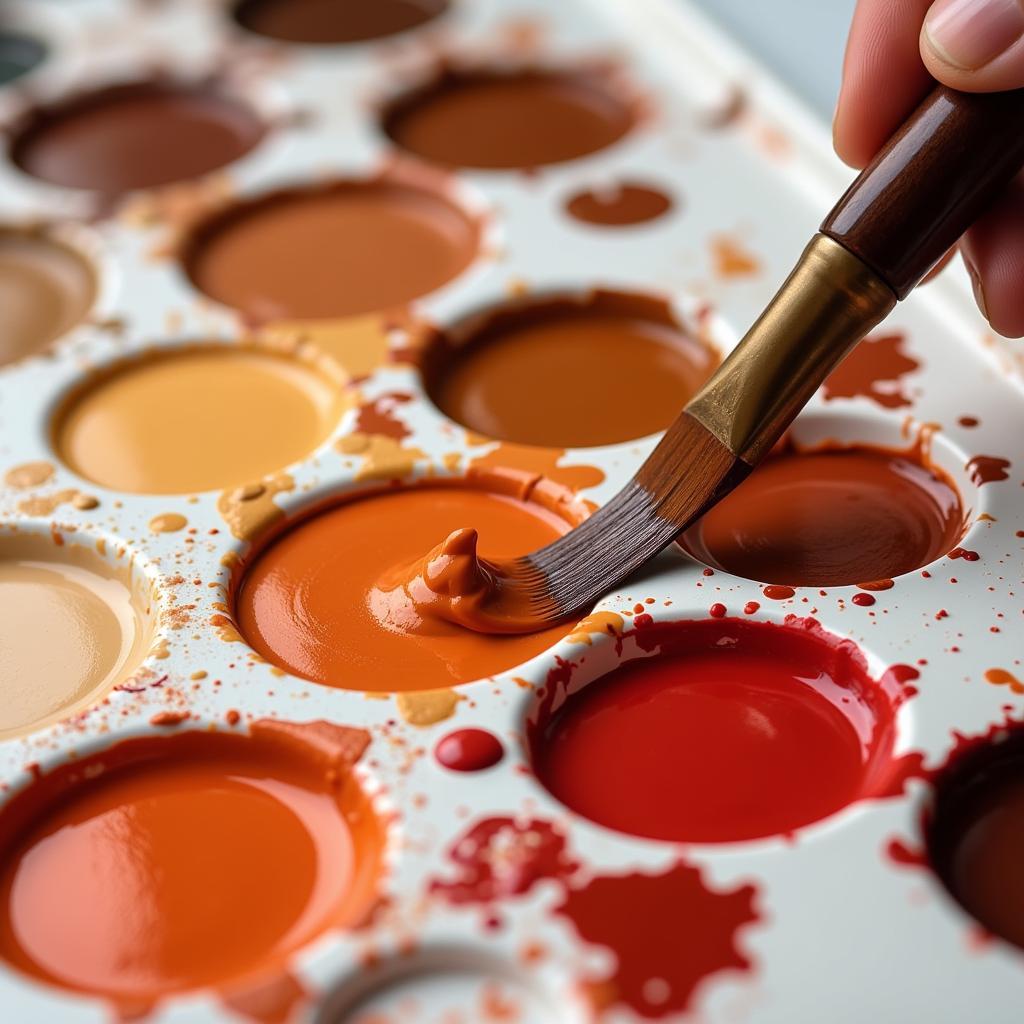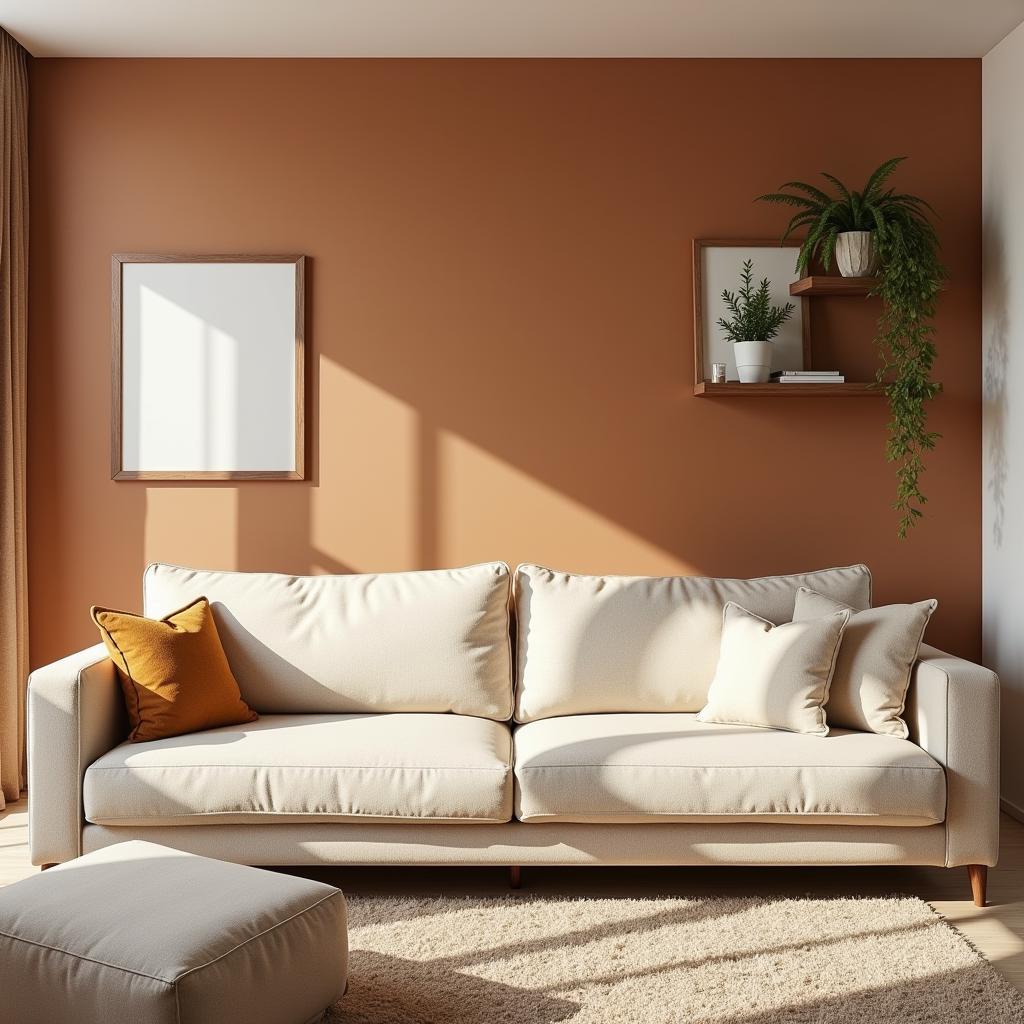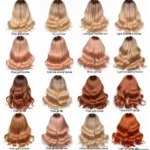Creating a warm and inviting gingerbread color paint is easier than you think! Whether you’re crafting festive decorations, painting a cozy accent wall, or adding a touch of spice to your furniture, this guide will walk you through the process of achieving that perfect gingerbread hue. We’ll explore various mixing techniques, color combinations, and tips to help you achieve professional-looking results.
Understanding Gingerbread Color
Gingerbread isn’t just a delicious treat; it’s also a beautiful and versatile color. It evokes feelings of warmth, comfort, and holiday cheer. The color is characterized by its rich, earthy tones, often described as a blend of brown, orange, and a hint of red. Achieving this specific shade requires a careful balance of these colors, and we’ll guide you through the steps to get it just right. What truly defines the gingerbread color is its depth and complexity. It’s not a flat, one-dimensional brown, but rather a nuanced shade with subtle undertones that create its unique character.
Mixing Gingerbread Color Paint
There are several ways to achieve the perfect gingerbread color, depending on the type of paint you’re using and the specific shade you desire. Let’s explore some common methods.
Method 1: Starting with Brown
- Begin with a base of brown paint. Raw umber or burnt umber are excellent starting points.
- Gradually add small amounts of orange paint, mixing thoroughly until you achieve the desired warmth. Cadmium orange or a similar vibrant orange works well.
- For a deeper, spicier gingerbread, incorporate a touch of red paint. Alizarin crimson or burnt sienna can add that extra dimension.
Method 2: Starting with Orange
- Alternatively, you can start with a base of orange paint and add brown gradually. This method allows you to control the intensity of the orange tones.
- Use a darker brown, like burnt umber, to create a richer gingerbread color.
- A small addition of red can also enhance the depth and complexity of the hue.
Method 3: Using Pre-mixed Colors
- If you’re looking for a quick and easy solution, some paint manufacturers offer pre-mixed gingerbread or spice-toned colors. These can be a great starting point, and you can always adjust the shade by adding small amounts of brown, orange, or red as needed.
 Mixing Gingerbread Paint
Mixing Gingerbread Paint
Tips for Achieving the Perfect Gingerbread Color
- Test your color: Before painting a large surface, always test your mixed color on a small, inconspicuous area. This allows you to see how the color dries and ensures it’s the exact shade you’re looking for.
- Lighting matters: Lighting can significantly impact how colors appear. Test your gingerbread color in the same lighting conditions as the intended surface to ensure accurate results.
- Keep track of your ratios: If you create a gingerbread color you absolutely love, make sure to record the exact ratios of colors you used. This will make it easy to recreate the shade in the future.
- Consider the finish: The finish of your paint – matte, satin, or gloss – can also affect the final color. Experiment with different finishes to find the one that best suits your project.
Enhancing Gingerbread Color with Complementary Shades
Pairing your gingerbread color with complementary shades can further enhance its warmth and create a visually appealing space. Creams, off-whites, and lighter beiges provide a beautiful contrast and can highlight the richness of the gingerbread. Deep greens, such as forest or emerald green, also complement gingerbread beautifully, creating a natural and inviting ambiance.
 Gingerbread Accent Wall in Living Room
Gingerbread Accent Wall in Living Room
Conclusion
Creating gingerbread color paint is a rewarding experience that allows you to personalize your space with a warm and inviting hue. By following the mixing techniques and tips outlined in this guide, you can achieve the perfect gingerbread shade for any project. Whether you’re painting walls, furniture, or crafting decorations, the rich and earthy tones of gingerbread will add a touch of cozy charm to your surroundings. So, grab your paints, unleash your creativity, and transform your space with the delightful essence of gingerbread.
FAQs
- What type of paint is best for creating gingerbread color? Acrylic, latex, and oil-based paints can all be used to create gingerbread color.
- Can I use food coloring to make gingerbread paint? Food coloring is not recommended for paint as it can fade and may not adhere properly to surfaces.
- How can I make a lighter shade of gingerbread? Add small amounts of white or a lighter beige to your gingerbread mix to lighten the shade.
- What colors complement gingerbread well? Creams, beiges, off-whites, and deep greens create beautiful pairings with gingerbread.
- Can I use gingerbread color for exterior painting? Yes, gingerbread color can be used for exterior painting, but ensure you choose a paint formulated for exterior use.
- How do I prevent the paint from streaking? Apply thin, even coats of paint and allow each coat to dry completely before applying the next.
- Where can I find pre-mixed gingerbread paint? Some paint manufacturers offer pre-mixed gingerbread or spice-toned colors, which can be found at most paint stores.
Common Scenarios and Questions
- Scenario: I want to paint my kitchen cabinets gingerbread, but I’m worried it will be too dark.
- Solution: Try a lighter shade of gingerbread by adding white or beige to your mix. Consider using a satin or gloss finish to reflect more light.
- Scenario: I mixed my gingerbread paint, but it looks more orange than brown.
- Solution: Gradually add small amounts of brown paint, like burnt umber, until you achieve the desired balance.
- Scenario: I’m painting a gingerbread accent wall in my living room. What color should I paint the other walls?
- Solution: Cream, beige, or a light grey would complement the gingerbread accent wall beautifully.
Further Reading and Resources
- Explore our blog post on “Creating Warm and Inviting Spaces with Earthy Tones.”
- Check out our guide to “Choosing the Right Paint Finish for Your Project.”
Need help with your gingerbread color project? Contact us! Phone: 0373298888, Email: [email protected] or visit us at 86 Cau Giay, Hanoi. We have a 24/7 customer support team ready to assist you.

